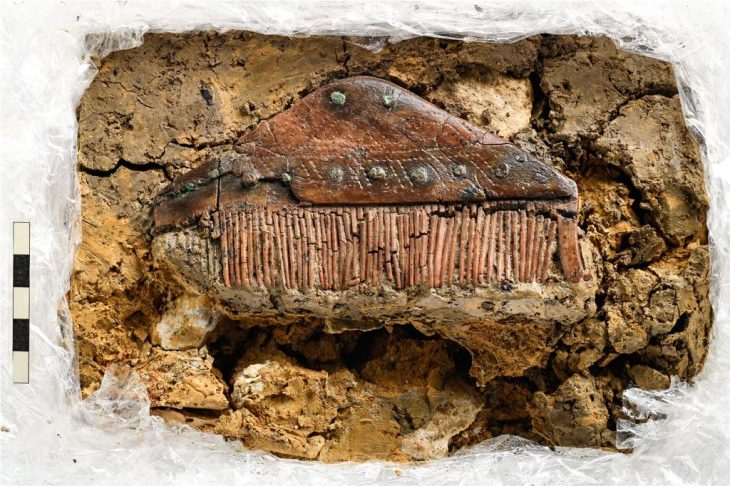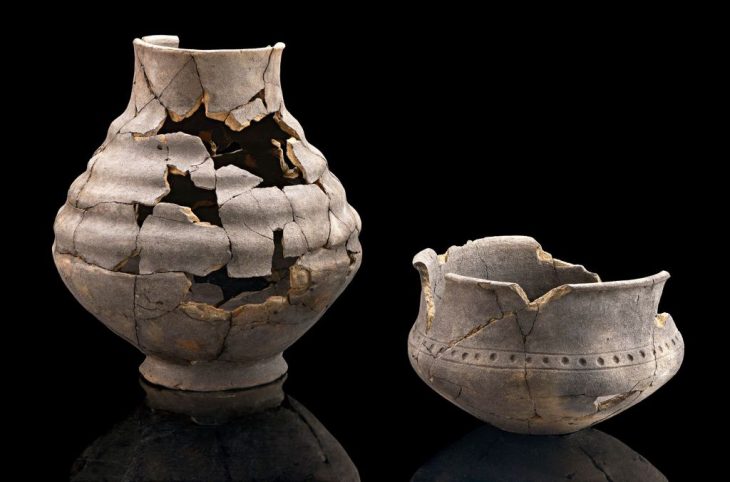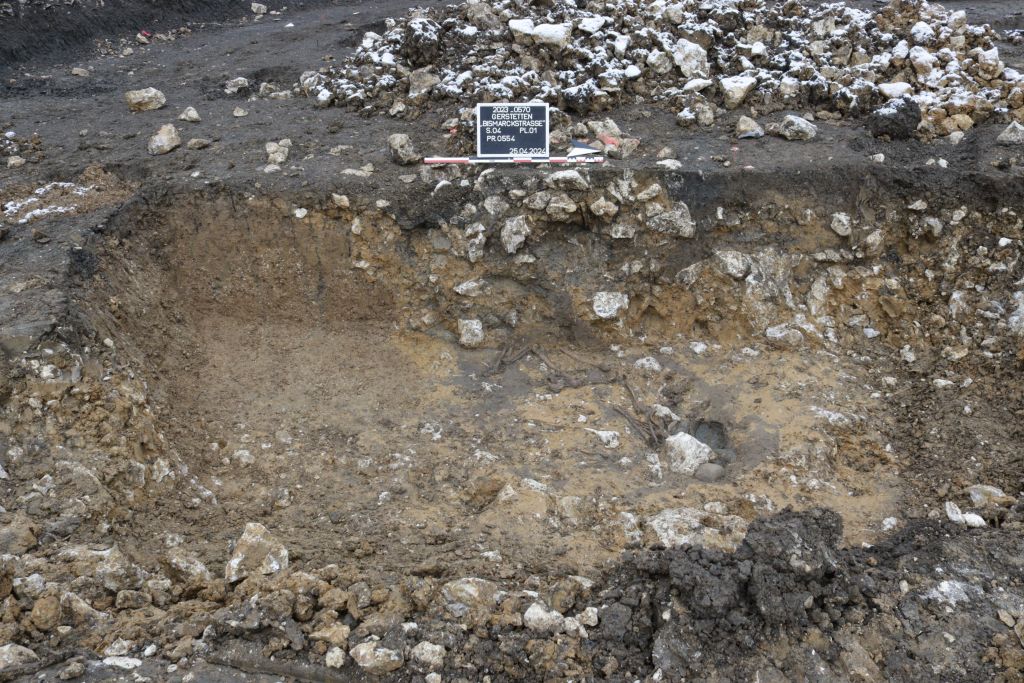During a rescue excavation in the village of Gerstetten, located in the Heidenheim district of southwestern Germany, archaeologists uncovered a rare Alemannic chamber grave dating back to the early 4th century. This discovery offers valuable insights into early Germanic culture in a region with deep historical ties to both Roman and Germanic influences.
The excavation was carried out by ArchaeoBW, a specialist archaeological company, under the direction of the State Office for the Preservation of Monuments (LAD) in the Stuttgart Regional Council. The excavation was part of a rescue operation in preparation for a new housing development in the village center, which has been continuously inhabited since late antiquity. This area is historically rich, with its roots extending back to Roman times, when the province of Raetia was established.
The Alemanni were a group of Germanic tribes who frequently clashed with the Roman Empire and settled in the region north of Raetia. The discovery of the grave sheds light on their presence in southwestern Germany, an area where early Alemannic burials are considered rare. This particular grave, found unexpectedly during the excavation, offers a glimpse into the life and status of the Alemanni in the early 4th century.
The grave, constructed as an elaborate wooden chamber, contained the skeletal remains of a man believed to have been around 60 years old at the time of his death. Radiocarbon dating places the burial between CE 263 and 342. The solitary location of the grave is typical for this period, indicating that the man may have held a prominent position in his community.

Inside the chamber, archaeologists uncovered a number of remarkable artifacts, including ceramic and glass vessels, a high-quality glass cup, and a small comb that was almost perfectly preserved, with all its teeth and handle intact. The discovery of these items, particularly the glass cup, which likely originated from the nearby late Roman fort of Guntia (modern-day Günzburg), suggests that the man buried in the chamber had access to valuable goods, possibly through trade or connections with Roman society. Other funerary objects found in the grave show similarities to artifacts from the central Elbe-Saale region, further emphasizing the wide-reaching influence and interactions of the Alemanni.
The design of the grave and the valuable items found within it indicate that the deceased held a significant status in Alemannic society. This is particularly notable in the context of the Baden-Württemberg region, where early Alemannic graves are uncommon. Most early Alemannic burial sites typically consist of small groups of five to twelve individuals. The unique design of this lone grave, along with the high-quality artifacts discovered inside, makes this finding exceptional.

Following the excavation, the artifacts were taken to the LAD restoration workshop in Esslingen for further analysis and conservation. The excavation team is also documenting other finds, including the human bones. Two ceramic vessels have already been restored, and the remaining artifacts are being carefully studied to provide a more detailed understanding of the burial and its significance.
The discovery has raised hopes that more graves might be uncovered in the area. The Stuttgart Regional Council has expressed optimism that additional archaeological investigations to the south of the current site could yield further findings. The archaeological team plans to continue exploring the site later in the year, potentially uncovering more about the early Alemannic presence in the region and their interactions with the Roman Empire.
This rare Alemannic chamber grave, with its intriguing artifacts and solitary design, provides a unique opportunity to learn more about the culture and social structure of the Alemanni during a pivotal period in European history. The ongoing research and preservation efforts will continue to enhance our understanding of the early Germanic tribes and their connections to the wider ancient world.
